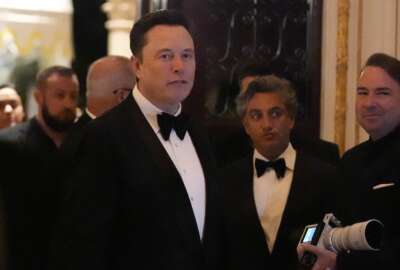Cars: Crucible for federal regulation, tariff debates
Cars coming from Mexico can reach half the world's market with no tariffs, twice as much as cars built in the U.S.
Unions all the way or right to work? Regulation or leave industry alone to innovate? Man-made climate change or myth to control or lives? Free trade or tariffs?
These debates and many others have reached the fortissississimo stage. That’s four “fs” on the musical staff — REALLY LOUD. How loud? Beethoven only used fff once in all his works. Never ffff. And he was deaf.
The worst thing is when people try to peg you to one extreme or the other and you’re actually somewhere in between.
On the regulation front, nowhere does the endless debate play out more visibly than in the automobile industry. If you’re a car enthusiast like me, you can’t help but marvel at how good cars are today compared to the 1970s and ’80s. The average Ford or GM car back then typically started rusting through within a couple or three years of your buying it. Remember the playful steering and whimsical brakes of those days? Just about everything about cars has improved to the point where the average inexpensive sedan today is far superior to the top shelf cars of yesteryear.
Much as free marketeers may be loathe to admit it, regulatory policies of the federal government had a lot to do with it. And much as regulatory zealots may be loathe to admit it, much of the improvement came as a result of competition.
On the regulation front, does anyone think cars would be as clean-burning, safe or reliable as they are, were it not for emissions, mileage and safety regulations? More likely we’d be choking in smog, like people in India and China are now, and impaling ourselves on one-piece steering columns.
And yet does anyone think the entity formerly known as “Detroit” would make a competitive car were it not for competition, initially from Japan — a nation that moved itself from a reputation of junk producer after World War II to the envy of the manufacturing world?
As Kristin Dziczek, the director of the industry and labor economics group at the Center for Automotive Research points out in my interview with her on the Federal Drive, the auto industry and the federal government are intertwined. EPA, Federal Trade Commission, Transportation and Treasury, all have some regulatory role. They affect the size of, materials in, and performance of cars. And therefore the lives of not only car buyers and drivers, but also of the approximately 215,000 U.S. employees in car assembly and 570,000 in the supply chain. To say nothing of the millions of others involved in sales, transportation and repair of cars. So, yes — in a mezzo forte voice — regulation is required but so is a prudent approach to it. What a radical idea.
President Donald Trump has made several mentions of the car industry. He’s floated the idea of tariffs on cars built in Mexico and sold in the U.S. But the economics aren’t so simple, aside from whatever you feel about tariffs.
Dziczek points out, there sure is a big labor cost differential. Mexicans in car assembly earn about $6 an hour, employees in the U.S. an average of $28. But since a car only has about 20 hours of labor in it, the differential isn’t all that important to the final cost, or at least not the deciding factor.
She says Mexico also has free trade agreements with some 44 countries. Cars coming from Mexico can reach half the world’s market with no tariffs, twice as much as cars built in the U.S. because of our fewer trade agreements.
That means, for example, a $40,000 Audi built in Mexico can reach Europe with $4,000 less in tariffs than the same car built in the U.S. That’s 10 times the labor cost differential. No wonder so many car plants get established south of the border.
And yet, Dziczek says, of the $116.5 billion of automotive assembly investment made in North America since 2009, 73 percent of it went to U.S. plants. Plus, 40 percent of the value of cars built in Mexico comes from U.S. suppliers. Tariffs, Dziczek says, could harm the U.S. economically on balance.
Every production region has its low cost nearby countries. If we’ve got Mexico, Germany and France have Eastern European countries like Poland and Romania, and Japan has Vietnam and Thailand. It’s a highly global industry with big economic stakes for all participating countries. For federal regulators, I think it’s fair to say that your work will likely change given political and economic realities. But it won’t go away.
Copyright © 2024 Federal News Network. All rights reserved. This website is not intended for users located within the European Economic Area.
Tom Temin is host of the Federal Drive and has been providing insight on federal technology and management issues for more than 30 years.
Follow @tteminWFED







